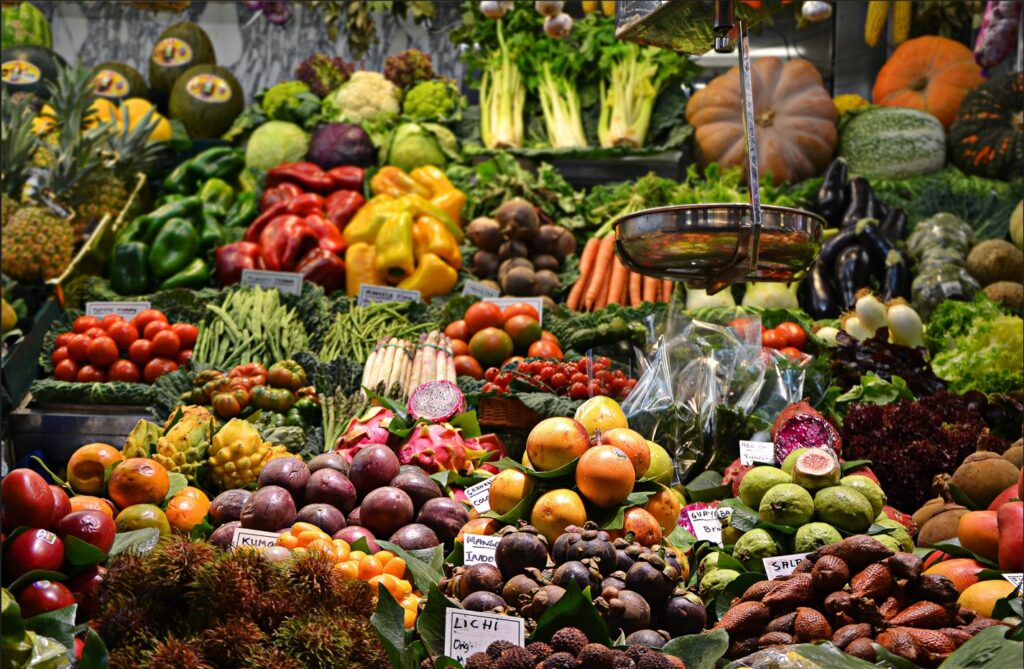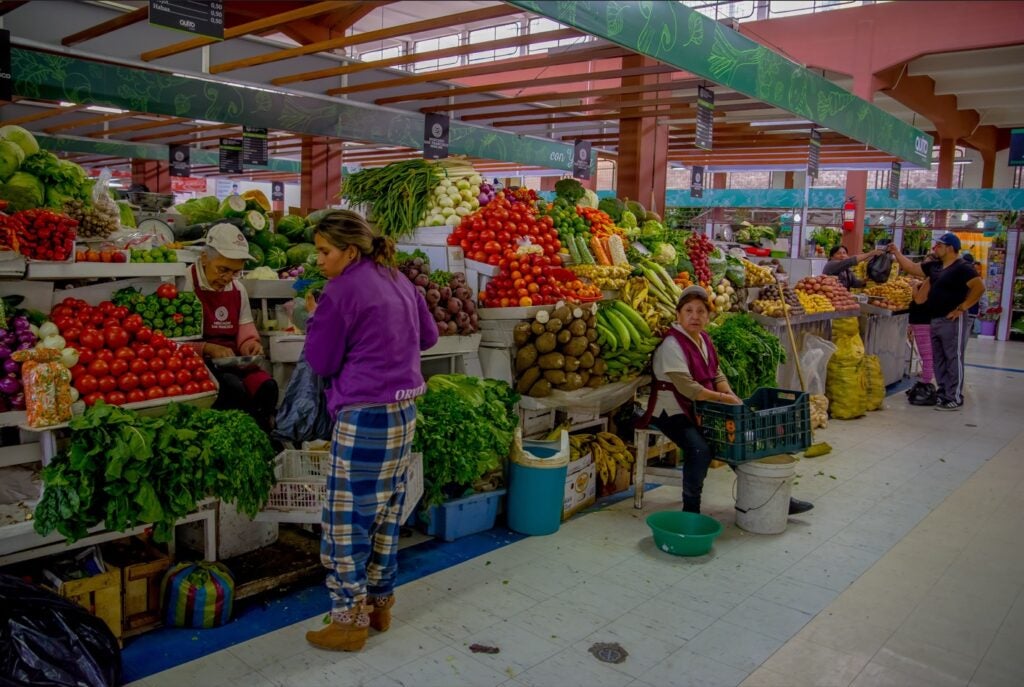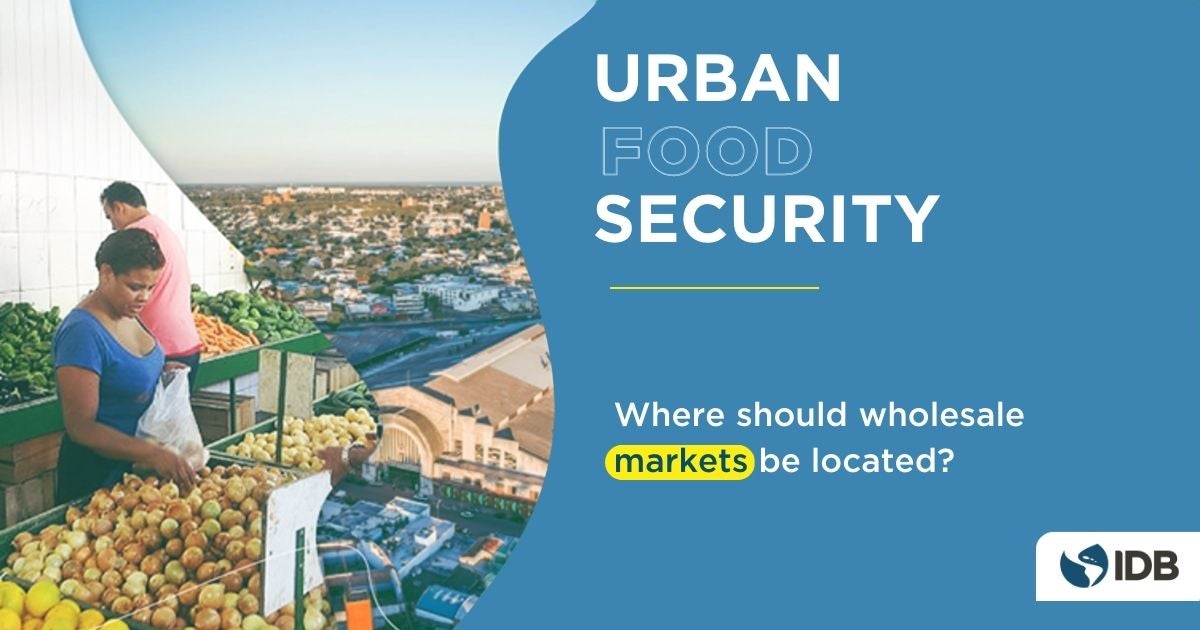Este artículo está también disponible en / This post is also available in: Spanish
Markets have been, since their creation, the epicenter of city life. They are places where goods are exchanged, where people meet, but above all, they are the places that make food security possible in our cities.
Markets, as we know them today, date back to the 19th century. They are the result of the predominant urban planning ideas of that period, which advocated moving the traditional open-air market in the public square to a central covered space. In recent decades, Latin American and Caribbean (LAC) cities have grown rapidly horizontally, which means that most of their populations live far from the urban center. Is now the time to move the wholesale market out of our cities to adapt to today’s urbanism? In this article, part of a series on urban food security, we will try to answer this question. Read on for more details.


The larger the population, the greater the demand for food: how can we meet it?
During the last decades, LAC has experienced a very high migratory exodus from the countryside to the city. The region’s population is growing and becoming more concentrated in urban areas. Nearly four out of every five people in the region live in areas classified as urban: about 40 percent of these live in megacities exceeding one million people, while 60 percent live in smaller cities and towns. The expansion of urban territories and the merging of cities have led to the formation of large metropolitan areas with active economic and social activities across multiple municipalities. Urbanization in Latin America and the Caribbean (LAC) has resulted in increased food demand, and greater reliance on traditional food distribution channels – mainly composed of food markets and small retailers.
Urbanization, and the pressures emerging from it, ( not only of increased food consumption but also increased demand to food production and distribution to expanding urban areas) urgently demand infrastructure and logistic changes to safeguard fresh food access, to meet safety requirements and to strengthen resiliency and sustainability of food supply chain.
Agrifood systems, connecting the many and varied agents, environments and resources that make food availability and accessibility possible, are quickly adapting to keep up in their capacity to feed cities. As LAC experiences ongoing urbanization, food systems will face the task of producing and delivering significantly larger quantities of food to the growing urban populations. The scale of this challenge becomes apparent when considering the existing achievements of food systems. For instance, the Mexico City wholesale market already moves 11 million tons of food annually to serve the 21 million inhabitants of the greater Mexico City area. By 2050, the market will need to handle nearly twice that amount.
Markets, at the heart of food security
Marketplaces play a fundamental role, particularly in low- to middle-income economies, in providing market access for domestic producers and local products, often being the sole or primary means of trading fresh produce. Moreover, food markets can be pivotal in food distribution, as observed in LAC. These roles do not just have local impact, but may have regional, national or transnational implications for food systems.
Despite shifts in virtual and globalized forms of exchange, markets continue to be preferred as platforms for cooperation, coordination, and connectedness around food products. Their dynamism and flexibility, prioritizing direct and personal exchanges where market actors converge, have allowed them to prevail, despite pressures of modernization, competitiveness, and changes in production and consumption conditions.
In the sprawling cities of the region, the traditional marketing channel is composed by several aggregation and wholesale markets that facilitate food distribution, and a likewise large number of retail markets and vendors mainly sourced by these wholesale infrastructures.
What functions do markets perform?
In their various shapes and sizes seen today, marketplaces provide diverse operational functions:
- Are the main platforms for collection and primary marketing of fresh products when they are located close to production areas, as in the case of wholesale food markets with a stronger function of aggregation, such as assembly markets.
- Are key centers for local food provisioning where populations are settled in urban and urbanizing locations
- Host a range of livelihoods, within, or closely connected to, their infrastructure, with a variety of value chains converging in these platforms.
- Contribute to formalizing business activities, drawing informal operations into regulated marketing channels that can support fairer conditions in market participation for all food value chain actors.
- Create environments for participation in broadening food access, from the wide variety of actors involved, as well as for inclusive urban development, encouraging private investment and offering synergies that boost competitiveness of small actors, unequally facing bigger players (such as large agrifood production and retail firms).
Should we move wholesale markets out of city centers?
In LAC, most wholesale markets are located in urban centers even though a significant part of the population lives in informal settlements that are poorly connected to the city centers. This prevents easy and quick access to logistics centers. Their location has not been considered as part of city planning and it could be more strategic to meet the needs of a greater number of people and facilitate more efficient and less polluted mobility in cities. Cities such as Parana, Argentina and Montevideo, Uruguay have or are in the process of moving their wholesale markets.
However, experiences in other regions, such as Europe, shows how the placement of wholesale market needs to be considered in a differentiated way depending on the context of each city. Food systems can be considered as different as cultures and even through there are basic approaches that can be applied to most markets, other specifics need to be considered to ensure food supply.
This process of moving the wholesale market out of the city center was already experienced 20 years ago by European cities such as Braga, Portugal. However due to urban growth the market location is being debated once more as it is no longer located in the periphery of the city. In the case of Hamburg, given the decreasing population growth and the size of the city the market will not be moved out of the city center as has been the case in Western Europe given the demographic changes.
Argentina:
In Parana, given the poor infrastructure conditions of El Charrua Market the Municipality, together with the Board of Directors, are planning on moving the market through a public-private partnership. The new market will have a prime location and is expected to be a regional reference point in terms of innovation and employment.
Uruguay:
The Mercado Modelo in Montevideo was transferred in 2021 to the metropolitan area and now plays a crucial role in local economic development by creating new opportunities for both small-scale producers and entrepreneurs. Additionally, the transfer of the Mercado Modelo has stimulated urban regeneration in the Aguada neighborhood where the new market is located. The market’s relocation has brought new life and activity to the area, attracting investments in infrastructure, hospitality, and real estate. This revitalization has not only improved the physical landscape but has also enhanced the overall livability and attractiveness of the neighborhood.
Germany:
The Hamburg Wholesale Market was originally built in 1962 and located in the city center. The location of the market has been strategic and in 2010 its was renovated. Given the changes in demography leading to a decrease in urban growth the market will not be moved as it could cause potential problems.
Webinar: Moving wholesal markets out of the city: lessons learned
If you are interested in this topic, we invite you to wacth the webinar that took place on Wednesday, June 27th, where we discussed the potential challenges and benefits of moving wholesale market outside the cities through the lens of cities in Latin America and Europe. Do not miss it:


Leave a Reply